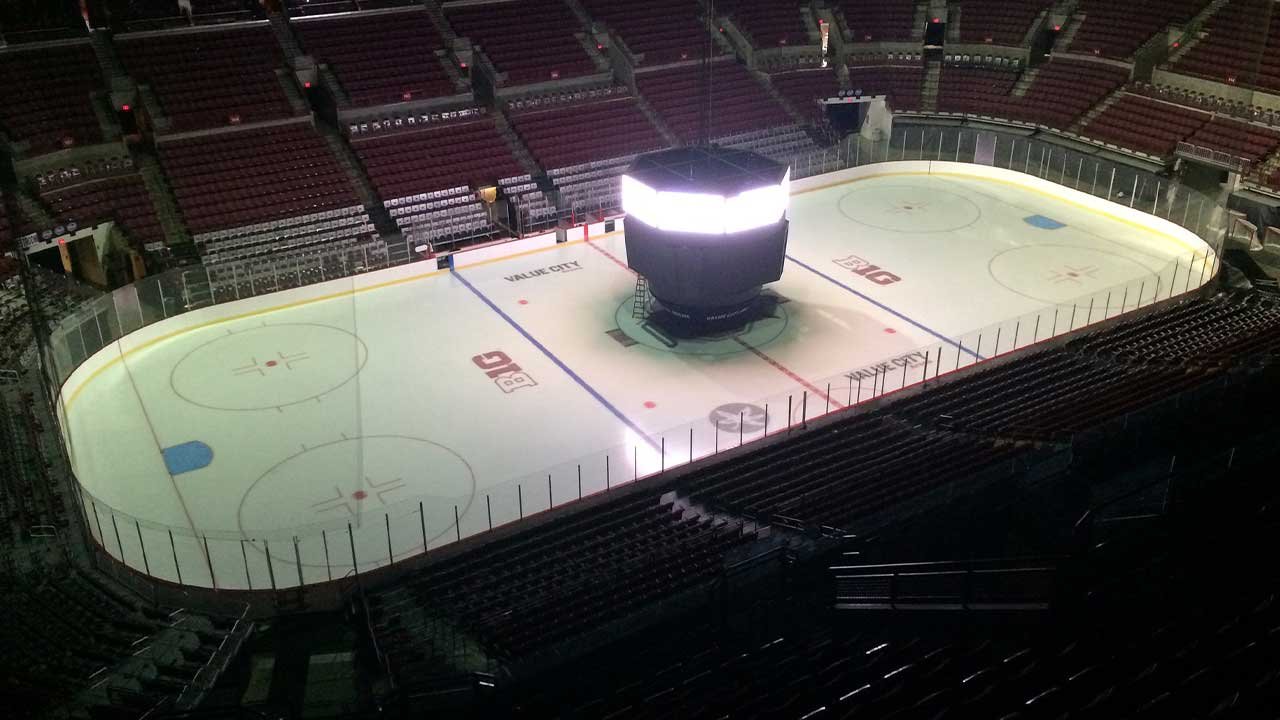No, not all NHL hockey rinks are the same size. While most NHL rinks share a standard size, there are slight variations that can affect gameplay.
Hockey fans often wonder if every NHL rink is identical. The standard NHL rink measures 200 feet long by 85 feet wide. This size is consistent across most arenas. But, older rinks and some international arenas have slight differences. These variations can impact the speed and style of play.
Understanding these differences can deepen your appreciation for the game. Let’s explore how rink sizes vary and what that means for teams and players.
Standard Nhl Rink Dimensions
Standard NHL rink dimensions play a crucial role in the game. These rinks must adhere to specific measurements for fairness. Understanding these dimensions helps fans appreciate the sport more.
Length And Width
An NHL rink measures 200 feet in length. The width is 85 feet. These dimensions ensure a consistent playing surface. Rinks that vary in size could affect gameplay. Thus, standardized measurements are vital.
Goal Crease And Markings
The goal crease is also standardized. It extends six feet from the goal line. The width of the goal crease is eight feet. This area protects the goalie. Other markings include the faceoff circles and blue lines. These markings help organize play. Players rely on them to navigate the rink.
Historical Changes In Rink Sizes
Historical changes in rink sizes have shaped the game of hockey. From its early days, the dimensions of NHL rinks have evolved. These changes have influenced how the game is played. Understanding this history gives insight into the sport’s development.
Early Rink Variations
In the early years of hockey, rink sizes varied greatly. There were no strict regulations. Each rink had its own dimensions. Some were much smaller than today’s rinks. Others were larger, offering more space for players to move. This lack of uniformity affected gameplay. Teams had to adapt to different rink sizes for each game. This created a unique challenge for players.
Modern Standardization
Over time, the NHL introduced standard rink sizes. The goal was to create consistency. Today’s NHL rinks are 200 feet long and 85 feet wide. This uniform size helps maintain fair play. It also ensures games are played under similar conditions. This standardization has streamlined the sport. Now, teams can prepare knowing the exact rink size they will play on.
Comparing Nhl And International Rinks
When discussing hockey, rink size is a critical factor. The size of the rink can impact the game’s pace and strategy. NHL rinks and international rinks have notable differences. Let’s explore these differences and their impact on gameplay.
Key Differences
The primary difference between NHL and international rinks is their size. NHL rinks are 200 feet long and 85 feet wide. In contrast, international rinks are larger, measuring 200 feet long and 100 feet wide.
Here’s a quick comparison:
| Rink Type | Length (feet) | Width (feet) |
|---|---|---|
| NHL Rink | 200 | 85 |
| International Rink | 200 | 100 |
Impact On Gameplay
The size difference affects gameplay significantly. NHL rinks lead to a faster, more physical game. Players have less room to maneuver, resulting in more body checks and quick passes.
On the other hand, international rinks offer more space. This encourages a more strategic and skillful game. Players rely on their skating and passing abilities, utilizing the extra room to set up plays.
In summary, the rink size affects both the style and strategy of hockey. Understanding these differences can enhance your appreciation of the game.

Credit: novacapsfans.com
Factors Influencing Rink Size
Many fans wonder if all NHL hockey rinks are the same size. The answer is no. Several factors influence rink size, creating unique arenas across the league. Understanding these factors helps appreciate why rinks differ.
Arena Constraints
Arena constraints play a significant role in rink size. Older arenas, built before standard dimensions, often have smaller or uniquely shaped rinks. These constraints can include:
- Building structure: Existing walls and support beams limit expansion.
- Seating arrangements: Seating capacity and layout affect rink size.
- Historical design: Older arenas may follow outdated standards.
These constraints make it difficult to standardize rink sizes in all arenas.
League Regulations
The NHL has set regulations for rink dimensions. The standard size is 200 feet long by 85 feet wide. However, some leeway exists within these regulations.
- Newer arenas: Must adhere to standard dimensions.
- Older arenas: May have variances due to historical constraints.
- International arenas: Often follow different standards, impacting NHL games played abroad.
While the NHL aims for consistency, historical and international factors create variability.
Impact Of Rink Size On Players And Teams
Rink size impacts hockey games significantly. Differences in dimensions affect players’ performance and teams’ strategies. Smaller rinks create a fast-paced, physical game, while larger rinks offer more space and a strategic approach.
Player Performance
Rink size influences player performance. Smaller rinks demand quick decision-making and agility. Players must react rapidly due to the confined space. This leads to an emphasis on physicality and body checks.
Larger rinks provide more room to maneuver. Players can showcase their skating skills and puck control. The extra space allows for more strategic plays and creative movements. This benefits players with high hockey IQ and finesse.
Team Strategies
Team strategies vary with rink size. On smaller rinks, teams focus on aggressive forechecking and tight defense. They aim to disrupt opponents quickly and capitalize on turnovers.
On larger rinks, teams use a more possession-based approach. They spread the ice and create passing lanes. This style requires excellent communication and positioning. Teams with skilled playmakers thrive in this environment.
| Rink Size | Player Performance | Team Strategies |
|---|---|---|
| Smaller | Quick decisions, physical play | Aggressive forechecking, tight defense |
| Larger | Skating skills, puck control | Possession-based, strategic |
Understanding rink size’s impact helps teams and players adapt. This knowledge shapes training and game preparation. It also adds to the excitement and unpredictability of hockey.

Credit: www.polyglidesyntheticice.com

Credit: www.therinklive.com
Frequently Asked Questions
Are Nhl Hockey Rinks All The Same Size?
No, NHL rinks have a standard size. But, international rinks are larger.
What Is The Standard Size Of An Nhl Rink?
The standard size is 200 feet long and 85 feet wide.
Why Are International Rinks Larger Than Nhl Rinks?
International rinks are wider to allow for more open play and fewer stoppages.
Do All Nhl Teams Use The Same Rink Size?
Yes, all NHL teams use the standard 200×85 feet rink.
How Does Rink Size Affect Gameplay?
Smaller rinks mean faster, more physical play. Larger rinks favor skill and speed.
Are There Any Exceptions To Nhl Rink Size?
No, all NHL rinks must meet the same size requirements.
What Are The Dimensions Of An International Hockey Rink?
International rinks are 200 feet long and 100 feet wide.
Why Did The Nhl Choose A Smaller Rink Size?
A smaller rink makes the game faster and more exciting for fans.
Can Rink Size Change During A Season?
No, rink size must stay consistent throughout the season.
Conclusion
Not all NHL rinks are the same size. Size varies slightly by arena. Smaller rinks can affect gameplay and strategy. Players and coaches adapt to these differences. Understanding rink sizes can enhance your appreciation of hockey. Knowing these details adds depth to your viewing experience.
Next time you watch a game, notice the rink size. Appreciate how it influences the action on ice. Stay curious, and keep enjoying hockey!




